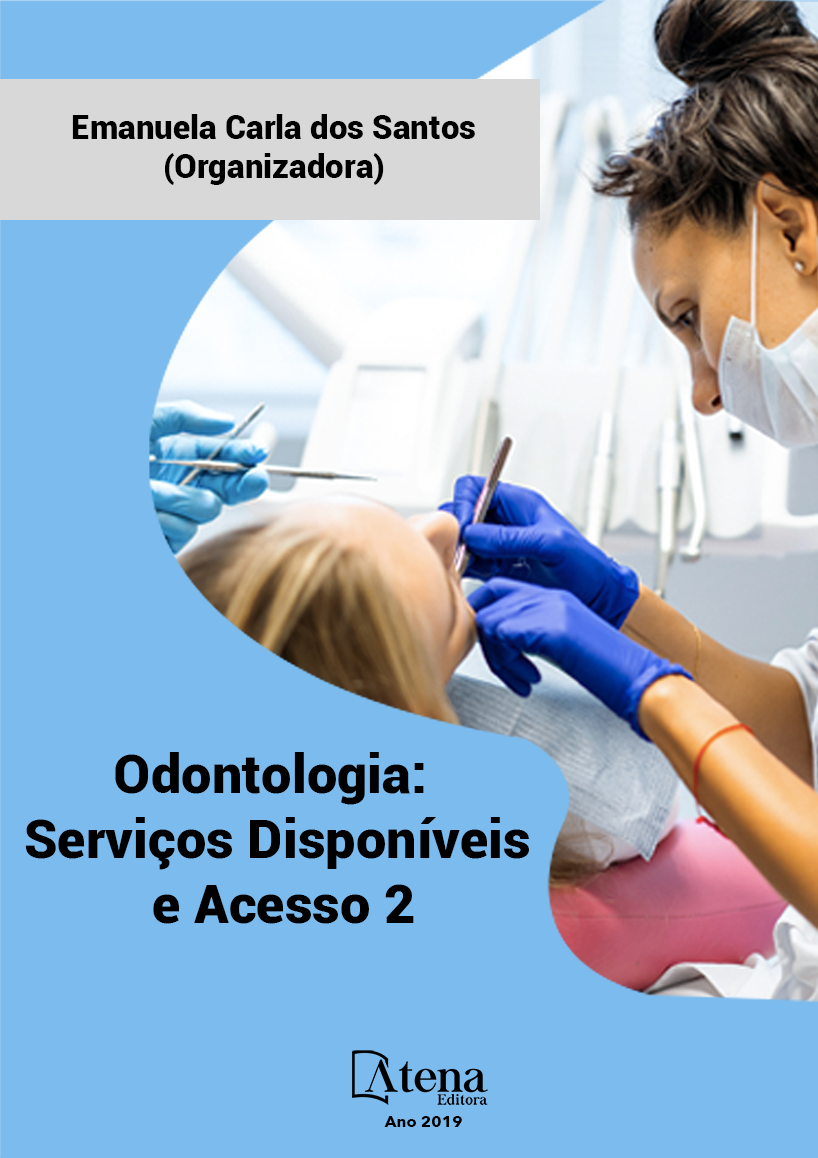
CONDIÇÕES DE SAÚDE BUCAL DE CRIANÇAS E ADOLESCENTES SUBMETIDOS A TRATAMENTO ANTINEOPLÁSICO
O câncer é uma doença multifatorial
e tem incidência elevada em todo o mundo.
Quimioterapia, radioterapia, cirurgia, ou
a combinação de protocolos constitui sua
abordagem terapêutica. O tratamento
antineoplásico tem efeitos adversos tanto
em nível sistêmico, local e bucal. O objetivo
da pesquisa foi analisar as condições de
saúde bucal de crianças e adolescentes
submetidos ao tratamento antineoplásico. A
amostra foi composta por 51 voluntários de
2 a 18 anos, amostragem censitária, com
neoplasia, cadastrados na APALA. Analisouse
a prevalência de cárie (ICDAS/CPOD), o
índice de placa visível (IPV%) e o índice de
sangramento gengival (ISG%). Os resultados
mostraram idade média de 8,6±4,53 anos,
76,47% do gênero masculino, 66,66% do interior
do estado de Alagoas, 62,74% com leucemia
e fazendo quimioterapia (98,06%). O câncer
mais prevalente foi a leucemia linfoblástica
aguda (58,82%). O CPOD foi de 7,12±6,09;
49,79% das superfícies com placa visível e
17,91% de áreas gengivais com sangramento.
O sangramento gengival foi mais prevalente
nos voluntários residentes na capital alagoana
(Teste t Student, p=0,01). Pode-se concluir
que os pacientes apresentaram prevalência de
cárie elevada, acúmulo expressivo de biofilme
dental e alto índice de sangramento gengival.
Os níveis de biofilme dental e sangramento
gengival sinalizam para necessidade de adequações nos hábitos de higiene bucal
dos voluntários para minimizar o risco de desenvolvimento da doença cárie dentária e
doenças periodontais.
CONDIÇÕES DE SAÚDE BUCAL DE CRIANÇAS E ADOLESCENTES SUBMETIDOS A TRATAMENTO ANTINEOPLÁSICO
-
DOI: 10.22533/at.ed.71019111114
-
Palavras-chave: Câncer; Quimioterapia; Radioterapia; Saúde Bucal
-
Keywords: Cancer; Chemotherapy; Radiotherapy; Oral Health
-
Abstract:
Cancer is a multifactorial disease and has a high incidence worldwide.
Chemotherapy, radiotherapy, surgery, or the combination of protocols constitutes its
therapeutic approach. Antineoplastic treatment has adverse effects at both the systemic,
local and buccal levels. The aim of the study was to analyze the oral health conditions of
children and adolescents submitted to antineoplastic treatment. The sample consisted
of 51 volunteers aged 2 to 18 years, census sampling, with neoplasia, enrolled in the
APALA. The prevalence of caries (ICDAS / DMFT), the visible plaque index (IPV%)
and the gingival bleeding index (ISG%) were analyzed. The results showed a mean
age of 8.6 ± 4.53 years, 76.47% of males, 66.66% of the state of Alagoas, 62.74%
with leukemia and 98.06% of chemotherapy. The most prevalent cancer was acute
lymphoblastic leukemia (58.82%). The DMFT was 7.12 ± 6.09; 49.79% of the surfaces
with visible plaque and 17.91% of gingival areas with bleeding. Gingival bleeding was
more prevalent in volunteers living in the Alagoan capital (Student t test, p = 0.01). It
can be concluded that the patients presented high prevalence of caries, expressive
accumulation of dental biofilm and high index of gingival bleeding. The levels of dental
biofilm and gingival bleeding indicate the need for adjustments in the oral hygiene
habits of the volunteers to minimize the risk of developing dental caries and periodontal
diseases
-
Número de páginas: 15
- Natanael Barbosa dos Santos
- Sylvia Amélia Vasconcelos de Albuquerque
- Ednar do Nascimento Coimbra Melo
- Ana Rita Santos de Lima
- Laís Renata Almeida Cezário Santos
- Diego Maurício de Oliveira
- Maria Helena de Albuquerque Silveira Melo
- Natália Leão Gonçalves
- Gabriela da Silva Xavier
- Hortensia Paiva de Melo Nunes


